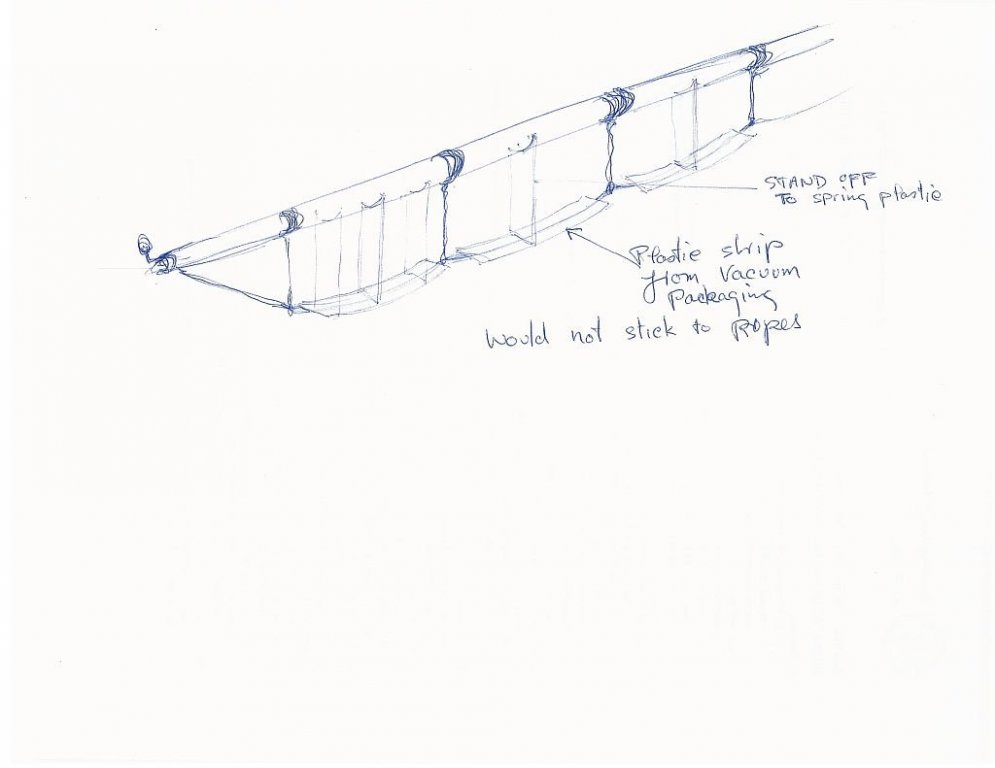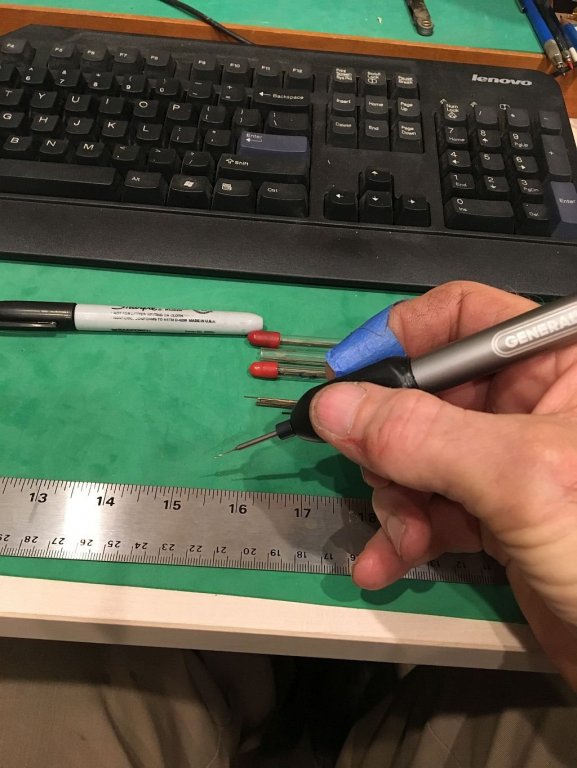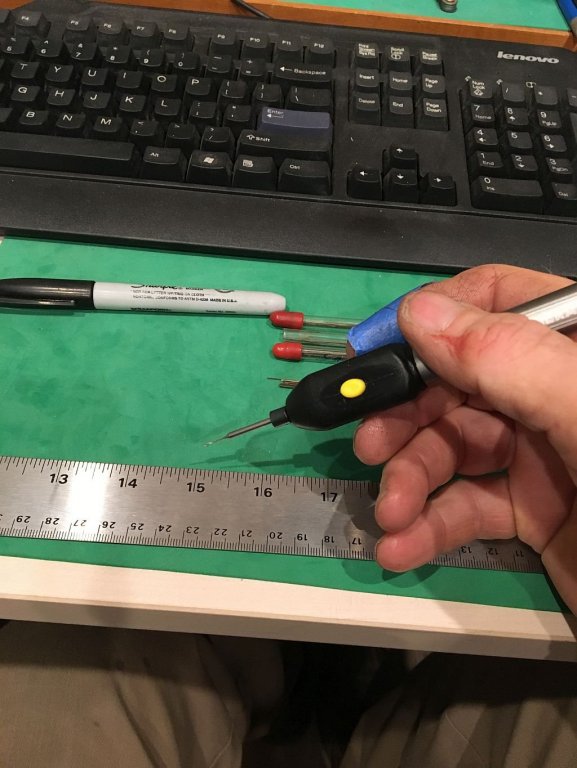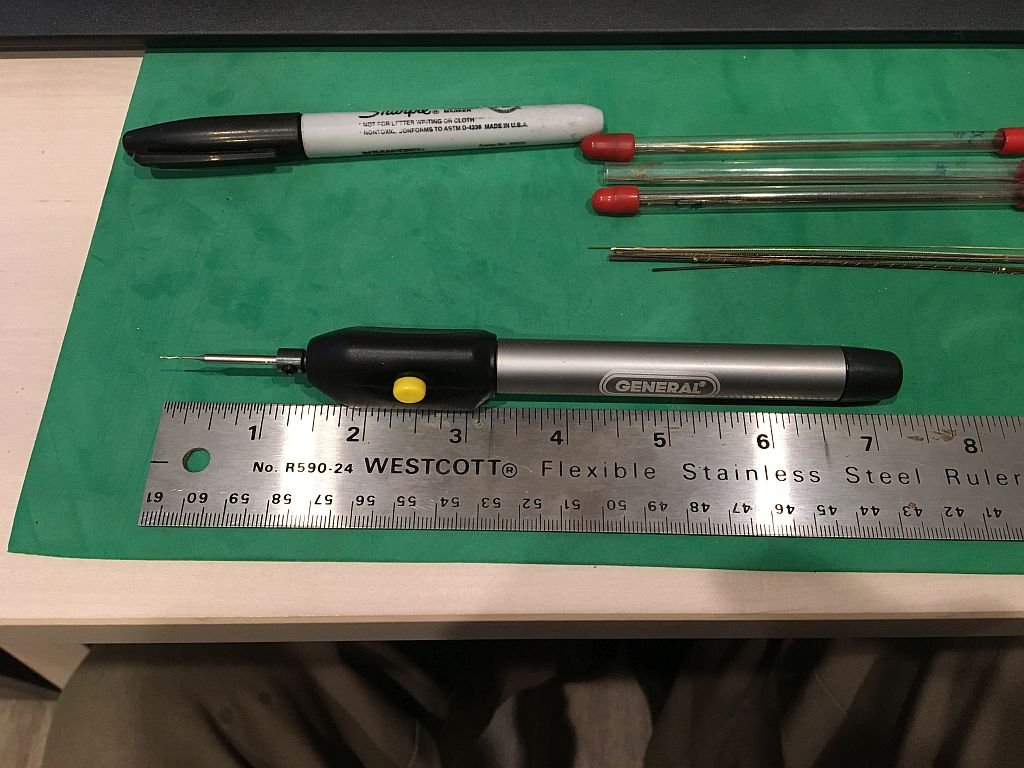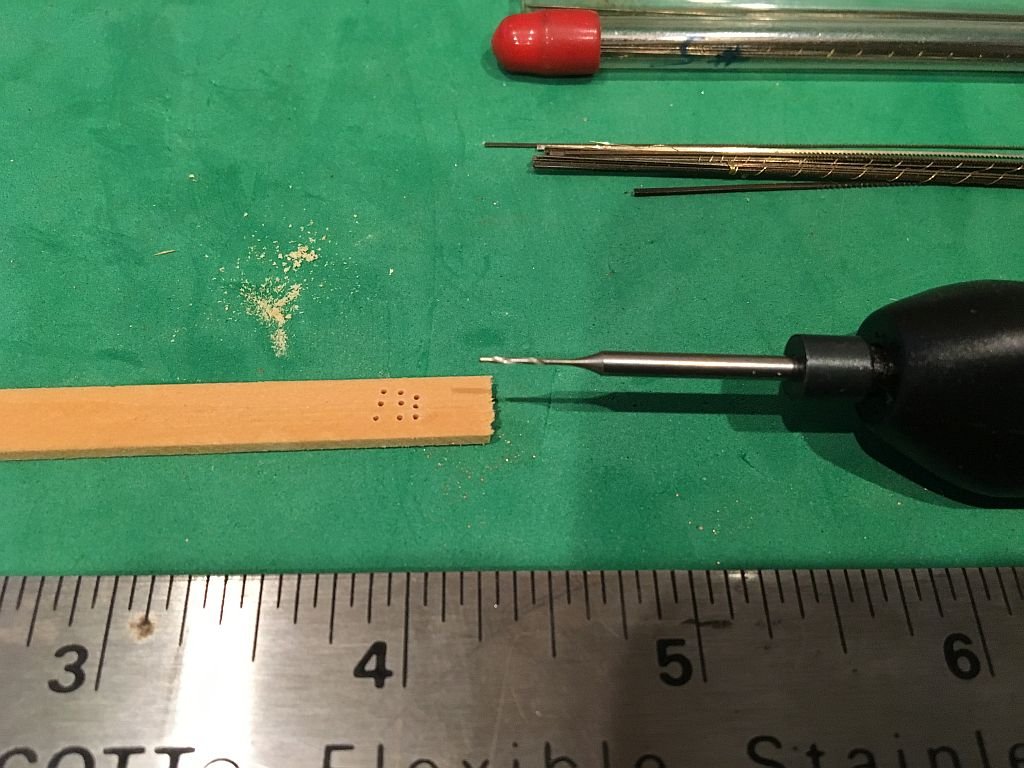-
Posts
5,197 -
Joined
-
Last visited
Content Type
Profiles
Forums
Gallery
Events
Everything posted by michael mott
-
Mike an interesting point. I remember that Gerald Wingrove built himself a small micro drill years ago using a model train DC motor and if my memory serves me correctly it was pretty short as well. At the low cost of these on sale, as an experiment I might just chop it up and use a short flex power connection between the head and the battery part of the body. It might be more trouble than it's worth, but on the other hand it might just be the ticket. Michael
-
Ed your comments about the falls crossing is interesting, my first thoughts about this are regarding the topping lift, it is an important line on my sailboat because I can use it in a hurry to spill wind off the mainsail in a hurry (immediately) I am not sure about square riggers but there would not be any doubt that the first pins would be logical from a speed point of view there being no confusion in a panic. One obviously doesn't want panic on such complex sailing vessels, but nature can require very prompt action at times. Part of that old "form follows function" idea. Michael
- 3,618 replies
-
- young america
- clipper
-
(and 1 more)
Tagged with:
-

Stevenson's ER32 Collet Blocks
michael mott replied to KeithAug's topic in Modeling tools and Workshop Equipment
A collet block is on my Christmas list. Michael -
I saw an ad in the Canadian Tire Christmas flier today they have them on sale for $12:49 so tomorrow I am going to pick up a couple more. Michael
-
Congratulations Rusty your model looks very nice. Michael
- 310 replies
-
- cheerful
- Syren Ship Model Company
-
(and 1 more)
Tagged with:
-
As Mark stated, the clarity and explanation of the complexities is superb. Michael
- 3,618 replies
-
- young america
- clipper
-
(and 1 more)
Tagged with:
-
I can see that the detailing will only be finished when the obligatory splash stains of the champagne liquid are evident on the bow. What a superb piece of model shipbuilding you are producing Keith. Michael
-
Looking at your photographs is always engaging Geatan, please tell us about the 4 schooners. The last picture is most interesting, what a simple way to keep the mill table clean with slips of hardwood filling the T slots. it also creates a more useful work surface if the vice is basically in a permanent position. The scale of your work is really interesting to follow, and your comments about the thickness of the glue interface was revealing, something that I had not really considered but yes the accumulation adds a significant amount. i shall also have a go at some dark background photographs because the really are dramatic. Michael
-
Hi Ed at risk of overworking the foot-rope issue of shape it occurred to me reading the comments about weights that a different approach might just prove to be useful. it involves shaping the rope by pushing gently on it with some clear vacuum packaging plastic. see the accompanying sketch I think it would be worth a trial on your jig. Michael
- 3,618 replies
-
- young america
- clipper
-
(and 1 more)
Tagged with:
-
Ah yes us folk who live on the outskirts of the civilized world eventually hear about these things, or stumble across them accidentally as I did. Michael
-
One of the issues with long lengths of naturally hanging rope, wire, or cable is that it tends to want to form naturally into a Catenary Arch which is the natural curve followed by anything hanging between two points. this curve is a result of gravity and the flexibility of the material hanging. To better understand this take a couple of blocks of wood with a pin in each place them about 6 inches apart and hang some model or jewellery chain between them, as the blocks are pushed closer together or pulled further apart the natural curve that occurs is a catenary arch. This is true for all curves hanging between two points. Therefore to get a clearer view of what the hanging foot rope would look like test the shape by using some small chain between the ends and hook the chain up at the various points, adjust the tension between the ends to get the required natural curves of the foot-ropes. Michael
- 3,618 replies
-
- young america
- clipper
-
(and 1 more)
Tagged with:
-
Fraid so John. Michael
-
One of the things that I do enjoy about following your work Ed, are the jigs and sequences that you use to accomplish this superb work. Michael
- 3,618 replies
-
- young america
- clipper
-
(and 1 more)
Tagged with:
-
I will be getting back to the ship by the end of this week. Michael
- 749 replies
-
- albertic
- ocean liner
-
(and 2 more)
Tagged with:
-
While on an obligatory trip to Home depot to pick up some caulking for the home reno, I took the opportunity to do a little grazing in the tool section, and came upon a small pencil engraver. this tool had a diamond burr for doing the engraving. Advertised as a standard 3/32 shank regular burr, with pictures for putting names on anything and everything. it was the 3/32 shank that piqued my interest, because I have a whole bunch of 3/32 shank miniature twist drills. It was also touted as 20,000 rpm, so fast. It was $39 so I purchased one as compensation for having to go back to get the second tube of caulking which i should have purchased the first time there. the yellow button is a momentary on switch. I drilled a few holes easily with a .022" drill it was true and smooth in its operation, and uses 2 AAA batteries. So it will be very useful for small hand held applications. Michael
-
Gerald, indeed enjoyable to read the information on you work anniversary, and the trials of replicating in model form the idiosyncrasies of full size subjects. The benefits of the building jigs are really apparent when it comes to the complex soldering sequences. Michael
- 281 replies
-
- falls of clyde
- tanker
-
(and 2 more)
Tagged with:
-
Isn't it amazing how many lines there are even in a simple rig. You are doing a super job Keith, although I think that you are being just bit skimpish with the pure white lines I would have thought with your attention to fidelity an' all you would have used some home spun unbleached linen for that final touch..... Oh these white lines are just placeholders for the real thing.
About us
Modelshipworld - Advancing Ship Modeling through Research
SSL Secured
Your security is important for us so this Website is SSL-Secured
NRG Mailing Address
Nautical Research Guild
237 South Lincoln Street
Westmont IL, 60559-1917
Model Ship World ® and the MSW logo are Registered Trademarks, and belong to the Nautical Research Guild (United States Patent and Trademark Office: No. 6,929,264 & No. 6,929,274, registered Dec. 20, 2022)
Helpful Links
About the NRG
If you enjoy building ship models that are historically accurate as well as beautiful, then The Nautical Research Guild (NRG) is just right for you.
The Guild is a non-profit educational organization whose mission is to “Advance Ship Modeling Through Research”. We provide support to our members in their efforts to raise the quality of their model ships.
The Nautical Research Guild has published our world-renowned quarterly magazine, The Nautical Research Journal, since 1955. The pages of the Journal are full of articles by accomplished ship modelers who show you how they create those exquisite details on their models, and by maritime historians who show you the correct details to build. The Journal is available in both print and digital editions. Go to the NRG web site (www.thenrg.org) to download a complimentary digital copy of the Journal. The NRG also publishes plan sets, books and compilations of back issues of the Journal and the former Ships in Scale and Model Ship Builder magazines.



